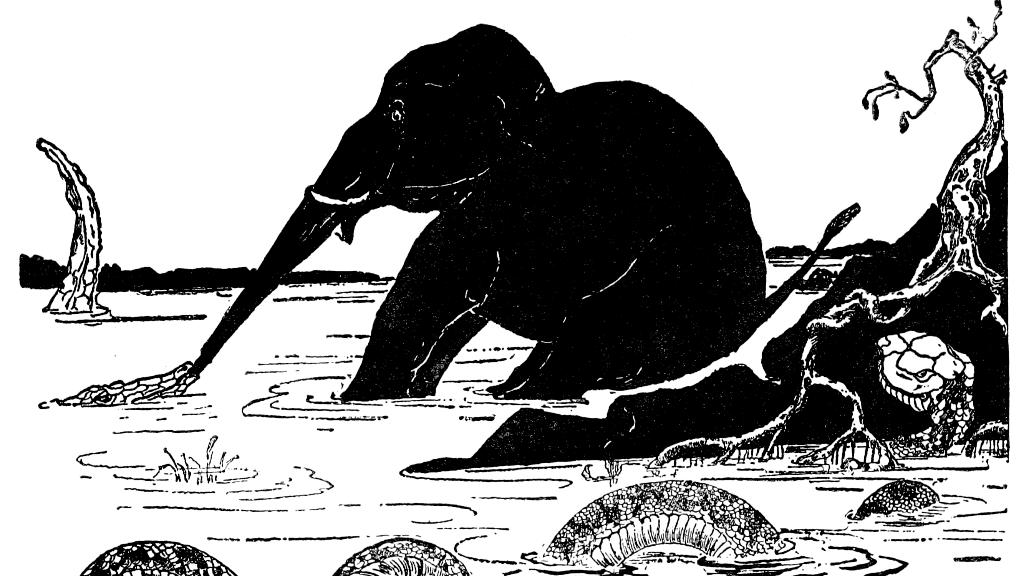Wondering how to measure river flows? Try using elephants. This vignette was shared with us by the river-raftin’ musician, Jenner Fox. It appears in Halfway to Halfway and Back, a book of river tales by our very own board member, Dick Linford.

Flow with Elephants
River flow is measured by how many cubic feet of water are passing a given point each second. The term is cubic feet per second or cfs.
A cubic foot of water weighs 62.4 lbs. A big African elephant weighs 14,000 lbs.
Flow is a volume of water on the clock. If you stand in one place looking at a river, a certain volume of water will flow past you every second. It is a continuous action and the time component is important. Second after second, the volume keeps rolling by.
On the Tuolumne River in California, very low flows can be 700 cfs. So every single second at low water on “the T,” 43,680 lbs. of water are flowing by— the equivalent poundage of 3.12 large elephants. Or for you math minded folks, nearly π large elephants.
For the majority of the 2015 Tuolumne season, the river flowed at roughly 1,200 cfs, that’s 5.34 big African elephants with great memories.
High water flows on the T can be 10,000 cfs. That is 624,000 lbs. of water going by every second or 44.57 elephants. Rounding up, at high water on the T, the weight of 45 elephants is stampeding through any given point of the river every second.
We are stampede surfers, floating on the backs of watery elephants.
Flow is a nebulous word. Hockey players use flow to describe the hair that sticks out the back of their hockey helmets. In the field of experimental psychology, flow is a state of consciousness in which the difficulty of a task is challenging enough to test but not exceed the limit of our abilities; perhaps, what a skilled guide experiences when rowing the Tuolumne for the first time.
It is a pleasurable feeling. One that demands all of our mental capacity, forces us into the present moment.
Flow has little to do with elephants and a lot to do with rivers. Perhaps not in the hockey hair sense, but hair does stick out the back of whitewater helmets too. The following quotation is peripherally related to all of it:
“Have you also learned that secret from the river; that there is no such thing as time? That the river is everywhere at the same time, at the source and at the mouth, at the waterfall, at the ferry, at the current, in the ocean and in the mountains, everywhere and that the present only exists for it, not the shadow of the past nor the shadow of the future.” Herman Hesse, Siddhartha.
In conclusion, the best way to navigate a river is to go with the flow. Not in the hippy dippy sense of naked dudes on a beach, but in the sense water going down stream. You want the elephants on your team. Use the elephants.